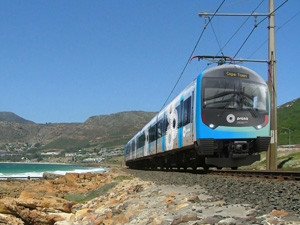
Transnet has signalled its intention for technology to play a pivotal role in safety at railway level crossings.
It is pushing ahead with plans to roll out an automated traffic control mechanism that makes it impossible for vehicles to pass when a train approaches.
The system uses hydraulically-operated physical barriers which automatically block traffic as they lift out of the road surface at crossings.
As trains approach the crossing, the mechanism triggers a series of actions, including changing traffic lights to amber, and then red, followed by booms closing on both sides of the road. The blockers are then lifted, creating what Transnet describes as "an impenetrable obstruction".
Transnet chairperson Mafika Mkwanazi said the company, and government, wanted to find a long-term solution to improved safety. "The solution was developed at Transnet Engineering. Transnet explored several solutions from leading innovators in the railways and transport industry, both locally and internationally," he said.
Mkwanazi added 228 accidents in the past three years led to 52 casualties and 140 people injured - a statistic the new mechanism aims to drastically reduce. He said the new system would be rolled out to more than 4 500 crossings across SA over an extended period, although no time frame or investment amount was specified.
Scanning tech
Meanwhile, CCTV monitoring firm TeleEye SA also aims to contribute to railway safety using scanning to detect whether a level crossing is clear of vehicles and pedestrians.
According to the company, the level-crossing obstacle detector uses technology from UK-based company Redscan and to determine whether any vehicles or pedestrians are using the crossing. "Redscan uses laser technology to detect a moving object's position, size and speed, and can be programmed to only go into alarm mode when intruders enter specific areas," the company said in a statement.
The system then sends a warning to the train, giving it enough time to stop before reaching the point of intrusion on the railway tracks.
Philip Smerkovitz, MD of TeleEye, said SA is working hard to reduce railway fatalities using educational initiatives, but more needs to be done. "Reckless and uninformed road users are a perennial problem in this country and we believe that technology has a key role to play in changing things. The fully automated solution offers a practical, reliable component of the total solution to unnecessary fatalities where our rail and road networks intersect."
Share